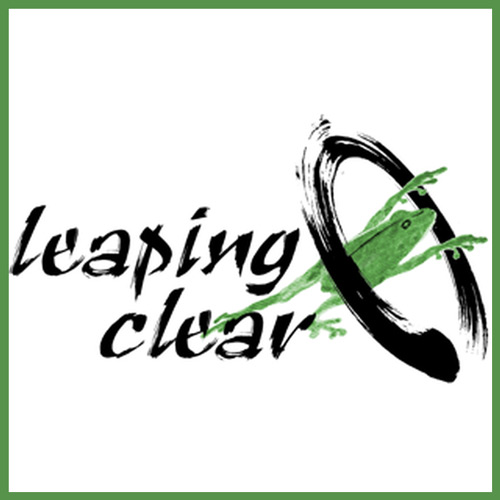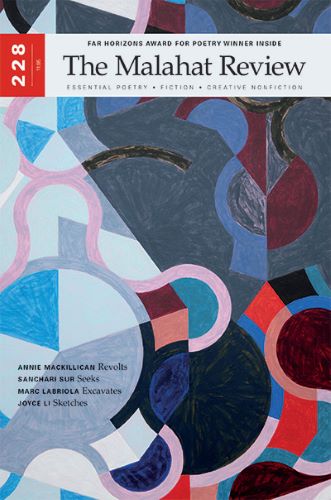Leaping Clear – Fall-Winter 2018
Works that ask: What is this? is what Leaping Clear values in its submissions. Artists and writers whose works are influenced by their involvement in meditative and contemplative practices will find a home here, as will readers who appreciate having a more interactive experience with what they read. Past issues included essay, fiction, music, video and photography, but this “Solstice” issue is focused solely on poetry and visual poetry.
Works that ask: What is this? is what Leaping Clear values in its submissions. Artists and writers whose works are influenced by their involvement in meditative and contemplative practices will find a home here, as will readers who appreciate having a more interactive experience with what they read. Past issues included essay, fiction, music, video and photography, but this “Solstice” issue is focused solely on poetry and visual poetry.
It’s the minutia that rises to the surface time and again in the Fall-Winter 2018 issue. Such as this opening from “Fading” by Erica Steinweg:
One tiny brown blossom
among the crowd of lilacs
outside my kitchen door.I saw it out of the corner
of my eye
and caught
how my heart broke
just a little bit.Strange how
one small
dying thing can cut me.
But underneath this ‘tiny’ image, such deep and tumultuous emotions. At the same time there is great strength in the poems in Leaping Clear, there is also a sense of calm, not of restraint, but just of a steady pressing forward, as in this excerpt from Garrett Phelan’s “Cleaning the Bones”:
How, just how, does my brother move through me?
I can’t write an accurate history on his page.
Sometimes I speak him exit words
that hurt coming in and going out.This night enters me brief and chaotic.
I edge into tomorrow his thumbprint
pressed into heart.
Nature is also a recurring theme in this issue’s selections, as with Angela Just’s “Sweet Spot with Leaves and Grass,” which opens, “I go to the garden to work the unfinished poem, / taking the wrong notebook, the empty one.” And then humorously anthropomorphizing the situation, “How like a first date this is, casting about / for something to hang a conversation on.” The imagery flows effortlessly back to nature and an empty page, “the shadows of leaves on it, the empty space / between the leaves in no way negative.”
A beautifully combined entry features David Wolfersberger’s watercolors and words, “Medicine bow laramie mountains,” with Madronna Holden’s poems “Strawberry Medicine (Medicine Bow, Wyoming)” and “Our Earth-Bound Souls.” Their connections to the natural world are inextricably woven together in image and word, as is our own existence with the world around us, as Holden writes:
What more exalted teacher
than canyons opening up
from middle earth
to educate our eyes
to the wonder of seeing?[. . . ]
What more profound reminder
of the compassion
of the stars than
the muddy joy
of our bodies?
What is this? indeed is the question that resonates when allowing ‘our eyes being educated’ and sensing “the muddy joy of our bodies.”
There’s a contemplative tone to this journal, as seems fitting, especially with such serious topics as illness, death and dying, trying to understand our place in the universe, and god, but there is also some lightness and humor where least expected, and thus even more appreciated. Virginia Barrett’s “Cemetery with Vallejo,” opens with a quote from Peruvian poet César Vallejo and ends with a revelation by Ant upon hearing Crow caw; moving the reader from death to the meditative musings of an ant is skilled poetics.
Another on the contemplative humor vein is Charles Rammelkamp’s “Zen Riddle,” which relates the common experience of having a credit card compromised and needing to recall all those secret passwords we’d set to protect ourselves:
The name of the elementary school I attended,
the name of my first pet,
my favorite rock and roll band.
The name of my favorite nephew?
How many had I had when I was asked?
What name did I say? Eli? Henry?“What is the name of the nearest city
in which a sibling of yours lives?”When did I answer that one?
“Both of my brothers are dead,”
I told the operator,
while “Nirvana,” “Heaven,” “Hell”
all shuffled through my head.
There are three works by David Felix, a visual poet from Denmark, which amuse as well as force readers to slow down, consider, and, as with good art and writing—reconsider. His “Flowchart #2” is going on my office door to remind me of the overwhelming forces of nature, but also, there’s something about it that makes me believe we can make choices to break away. Maybe. Still contemplating that one.
Unique to Leaping Clear, but in keeping with the journal’s mission, writers who submit to the publication are asked NOT to include previous publications in their cover letters, but instead “to briefly describe your meditation or contemplation practice.” As a result, each author’s bio is a way for readers to learn about others’ approaches to meditation and mindfulness as it relates to the writing life. I actually found these some of the most interesting author bios I have read (and I’ve read a lot!). Many read like mini craft essays: insightful as well as encouraging.
Still new on the scene, publishing since just fall 2016, I hope to see Leaping Clear continue well into the future. It is an easy to access, cleanly formatted online publication that, in our daily lives of noise and clutter, offers respite and renewal.
[www.leapingclear.org]





